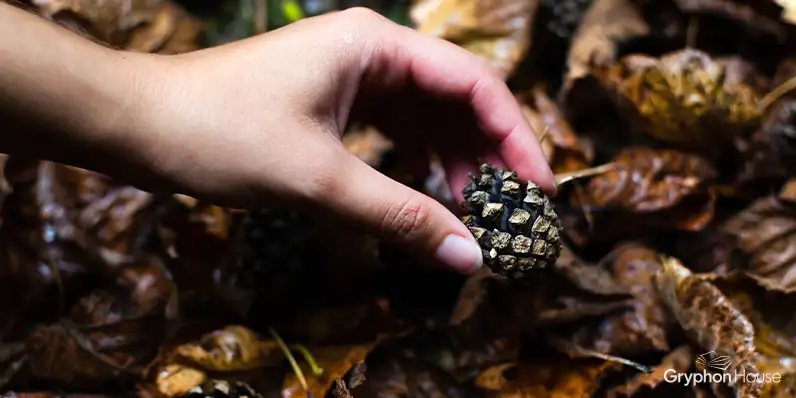Discovering the shadows of the trees on the playground, noticing a smooth pebble, or observing a woven wall hanging are all ways to help children see and appreciate the everyday beauty that surrounds them. Find the hidden beauty of your classroom using a few of these suggestions from Rebecca Isbell and Pamela Evanshen, authors of Real Classroom Makeovers.
- Simple displays of natural materials in the classroom provide a place to see, touch, and enjoy items such as an empty hornets' nest, a clear container of pebbles, pinecones, a mossy plant, or bark from a tree. Talking with the children about the unique features of these collections extends their ideas and expands their vocabulary, empowering them to communicate their thoughts.
- Color has a tremendous effect on the atmosphere of an early childhood classroom. For many years, primary colors on the wall; brightly colored toys; and bold, colorful displays filled classrooms for young children. Since that time, we have learned a lot about the impact of color in a classroom. The educators in the Reggio Emilia programs in Italy use color in a very different way: Light-colored walls provide a background for the children's work. In their schools, the color comes from the artwork, materials, and panels that reflect the children's learning and activities. This way of using color has had a tremendous effect on many early childhood programs.
- Painting is one of the quickest and least expensive ways to change your classroom environment. By painting the walls a neutral color, the focus of the space is on the children's work rather than on the color of the walls. Add color to the space with displays and selected materials in such a way that the additions enhance the organization of the classroom. For example, add a colorful arrangement of art materials and displays of the children's artwork in the Art Studio area. Other possible additions of color are natural materials, fabric, murals, wall hangings, pillows, labels, and aesthetically pleasing decorations. These items also add textural interest to the classroom and invite children to use their sense of touch to explore the classroom environment.
- Artwork created by children and adults adds color, texture, and beauty to early childhood classrooms. Draw the children's attention to these creations by displaying the art in attractive ways. Sometimes these displays of artwork inspire children to try new art techniques, or the displays simply expose them to art created in different ways. Local artists such as potters, weavers, or architects can visit, demonstrate, and display their work. Interacting with artists helps children discover that artists are all around them--and that they can be artists, too.
- Plants and flowers soften the space, clean the air, and create visual interest in early childhood classrooms. For instance, a large corn plant has an interesting structure, with leaves growing out of the large stalk. It is also a plant that is very easy to care for, surviving both flood and drought. Vines, ferns, succulents, and cacti also introduce unique shapes and textures into the classroom space.
For more small changes you can make to transform your classroom environment into a wondrous environment for young children to learn and develop, check out Real Classroom Makeovers.
Author(s)Rebecca Isbell, Pamela Evanshen, EdD
Brianna Blackburn
A graduate of Western Carolina University with a BA in English, Brianna served as a marketing and editorial Intern with Gryphn House in the Summer 2018.

